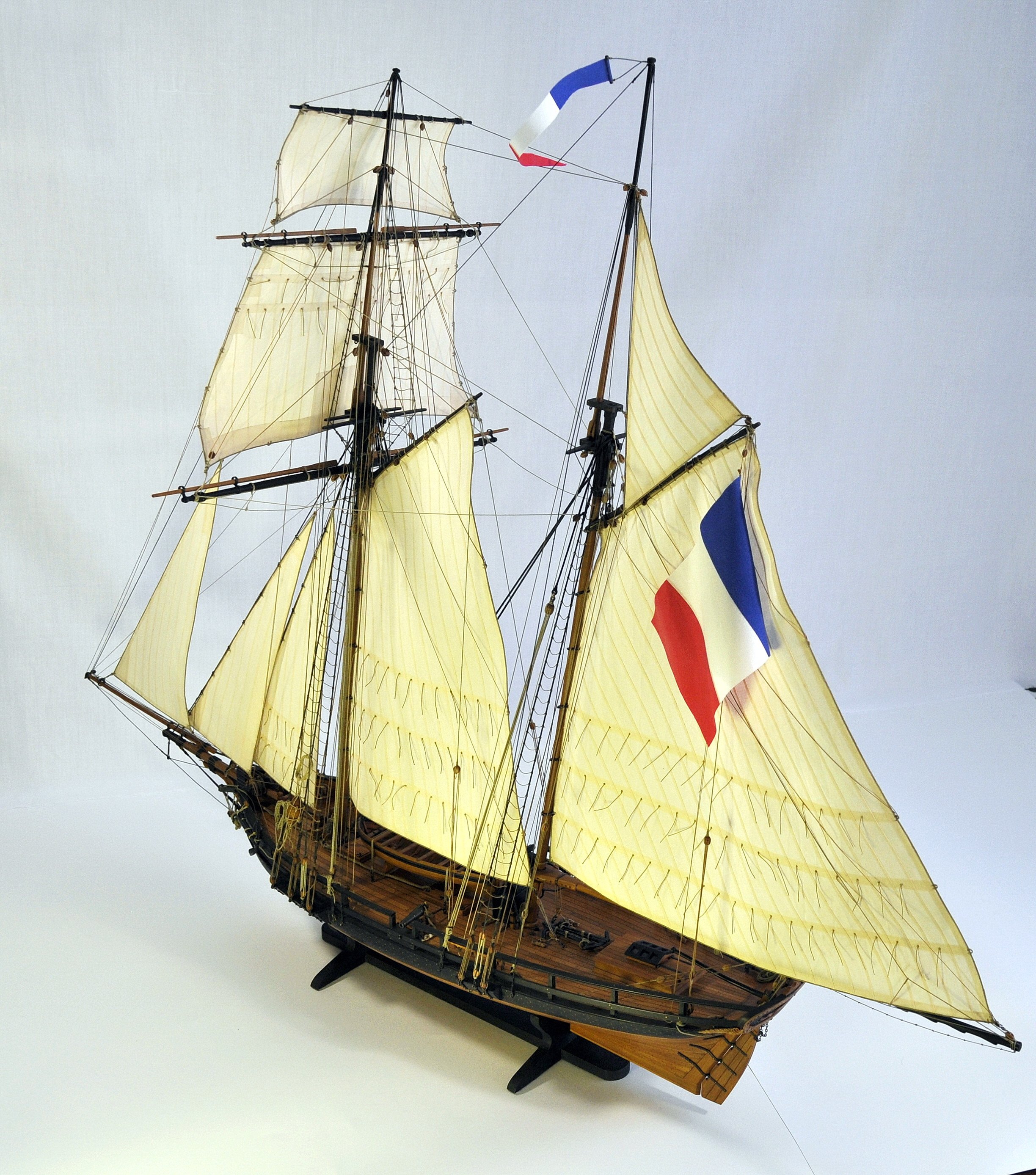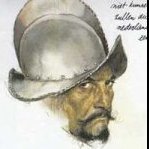-
Posts
557 -
Joined
-
Last visited
Content Type
Profiles
Forums
Gallery
Events
Everything posted by KORTES
-
I had to take my time, the profile is rather difficult to make. After molding the profile I left a small width margin and made the final refinements after gluing it, already in place.
- 306 replies
-
- schooner
- la jacinthe
-
(and 1 more)
Tagged with:
-
- 306 replies
-
- schooner
- la jacinthe
-
(and 1 more)
Tagged with:
-
I would like to present my attempts in making cap rail taffrail. I waited a long time to approach it, finding the right technology, finally setting for the plank bending with further refining. To start, I had to prepare a pattern, and as I had to bend the lath with a big margin(the original size 1,5:22 mm), I had to make reinforced fixators. I have made two samples, refining them while adjusting them in place.
- 306 replies
-
- schooner
- la jacinthe
-
(and 1 more)
Tagged with:
-
Dear Michael and Keith I’m very touched by your attention to my work.
- 306 replies
-
- schooner
- la jacinthe
-
(and 1 more)
Tagged with:
-
- 306 replies
-
- schooner
- la jacinthe
-
(and 1 more)
Tagged with:
-
Cap rail fore body. Material - black hornbeam, after installing, I fixed it in place with 0,6 mm brass nails.
- 306 replies
-
- schooner
- la jacinthe
-
(and 1 more)
Tagged with:
-
Now it’s time to make cap rail and waterways. I bent it after putting under steam, using a pattern. After fixation i dried it using a hot air gun - it speeds up the process.
- 306 replies
-
- schooner
- la jacinthe
-
(and 1 more)
Tagged with:
-
- 306 replies
-
- schooner
- la jacinthe
-
(and 1 more)
Tagged with:
-
- 306 replies
-
- schooner
- la jacinthe
-
(and 1 more)
Tagged with:
-
- 306 replies
-
- schooner
- la jacinthe
-
(and 1 more)
Tagged with:
-
Basically I’ve finished nailing. I finally got around to overhang. It is painted, taffrail is covered with pear tree and black hornbeam. I made it with a small margin, when the enclosures are set I will finish the taffrail.
- 306 replies
-
- schooner
- la jacinthe
-
(and 1 more)
Tagged with:
-
Thank you very much my dear colleagues. Dear Michael. I have a pause in building "SPERWER" - I'm making sails. That's why I decided to show on the forum my last finished work Unfortunately I don't belong to the masters who work quickly. Once, I have apent two weeks of my vacation to make nailing.
- 306 replies
-
- schooner
- la jacinthe
-
(and 1 more)
Tagged with:
-
- 306 replies
-
- schooner
- la jacinthe
-
(and 1 more)
Tagged with:
-
- 306 replies
-
- schooner
- la jacinthe
-
(and 1 more)
Tagged with:
-
My greetings, dear Dave. Before the beginning of the building I realised the necessity of such instrument.Unfortunately, to my point of view, the PROXXON instruments are unreasonably expensive . That is why I have found in the internet photo of such instrument and asked my brother, who works with metal, to make me one. As a result I have two machines in one and it was a lot cheaper.
- 306 replies
-
- schooner
- la jacinthe
-
(and 1 more)
Tagged with:
-
Treenails of the deck. Unfortunately, I didn’t master the make using the syringe needle, after a few failed tries I gave it up… I haven’t had enough patience. I decided to sharpen on the grinder. After some try-outs I opted for the pear tree instead of the toothpicks. D=0,6 mm.
- 306 replies
-
- schooner
- la jacinthe
-
(and 1 more)
Tagged with:
-
I have finished the covering of the second broadside. Sketching and putting treenail in place are still to be done. I’m still trying out on samples. As I will have to drill a lot, the manual drill will not be the best solution, I had to work on and upgrade my mini-drill. I bought it on flea-market a long time ago, but couldn’t find any use of it. Yesterday I installed a small switch and now I’m testing it.
- 306 replies
-
- schooner
- la jacinthe
-
(and 1 more)
Tagged with:
-
Dear druxey, Yes, you are right, making this decision wasn't easy, but I had an example of the outstanding Masters in front of me and I really wanted to get even if for a little closer to their quality of work. In the end I was satisfied with the results, even though I had to redo my work many times. Plus I have gotten experience out of it. Dear BETAQDAVE, It's hard to give a definite answer on the choice of the method of making a hull. I found this method used by Snarlev, and at that moment I thought it was the easiest and the least labor consuming.When working on "Sperwer" I used a different method, and I could say that each one has its own advantages. Dear KeithAug, The covering was removed by means of heating by a hot air gun, it wasn't hard due to the fact that I used PVA glue. My best regards, Alexander.
- 306 replies
-
- schooner
- la jacinthe
-
(and 1 more)
Tagged with:
-
- 306 replies
-
- schooner
- la jacinthe
-
(and 1 more)
Tagged with:
-
- 306 replies
-
- schooner
- la jacinthe
-
(and 1 more)
Tagged with:
-
Now, some of mistakes… In order to warn my colleagues, who , just like me , don’t have too much experience, I wanted to highlight my mistake in the process of covering. More than once in the working process I made sure that THE BEST IS THE ENEMY OF THE GOOD. After having completed the covering I decided , following the example of the Masters, to highlight the joints between the laths a bit. As a result, I haven’t succeeded in it, but I ruined the covering. The reason turned out to be banal – the glue on the plank ends, which wasn’t erased in time.
- 306 replies
-
- schooner
- la jacinthe
-
(and 1 more)
Tagged with:
-
- 306 replies
-
- schooner
- la jacinthe
-
(and 1 more)
Tagged with:
-
Rubbing strip and two upper belts I decided to make out of black hornbeam. It turned out to be a very technological material.
- 306 replies
-
- schooner
- la jacinthe
-
(and 1 more)
Tagged with:
About us
Modelshipworld - Advancing Ship Modeling through Research
SSL Secured
Your security is important for us so this Website is SSL-Secured
NRG Mailing Address
Nautical Research Guild
237 South Lincoln Street
Westmont IL, 60559-1917
Model Ship World ® and the MSW logo are Registered Trademarks, and belong to the Nautical Research Guild (United States Patent and Trademark Office: No. 6,929,264 & No. 6,929,274, registered Dec. 20, 2022)
Helpful Links
About the NRG
If you enjoy building ship models that are historically accurate as well as beautiful, then The Nautical Research Guild (NRG) is just right for you.
The Guild is a non-profit educational organization whose mission is to “Advance Ship Modeling Through Research”. We provide support to our members in their efforts to raise the quality of their model ships.
The Nautical Research Guild has published our world-renowned quarterly magazine, The Nautical Research Journal, since 1955. The pages of the Journal are full of articles by accomplished ship modelers who show you how they create those exquisite details on their models, and by maritime historians who show you the correct details to build. The Journal is available in both print and digital editions. Go to the NRG web site (www.thenrg.org) to download a complimentary digital copy of the Journal. The NRG also publishes plan sets, books and compilations of back issues of the Journal and the former Ships in Scale and Model Ship Builder magazines.



